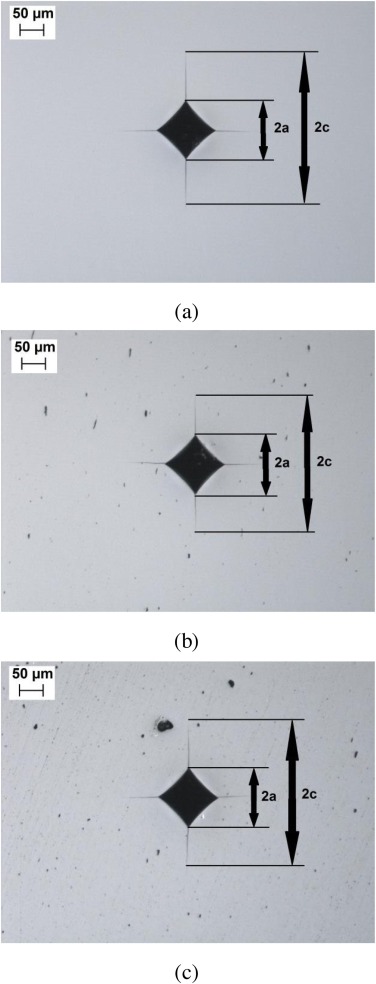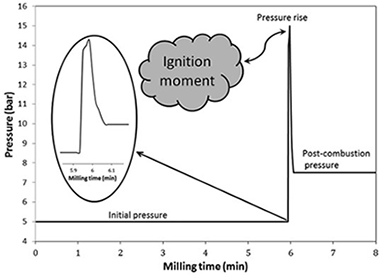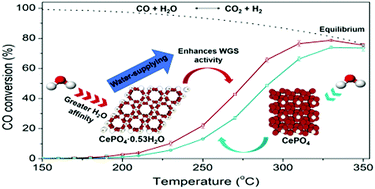Artículos SCI
2018
2018
Fotocatálisis Heterogénea: Aplicaciones
Photocatalytic H2 production from glycerol aqueous solutions over fluorinated Pt-TiO2 with high {001} facet exposure
V. Vaiano; M.A. Lara; G. Iervolino; M. Matarangolo; J.A. Navío; M.C. HidalgoJournal of Photochemistry and Photobiology A-Chemistry, 365 (2018) 52-59
Show abstract ▽

An optimized fluorinated TiO2 catalyst with high {001} facet exposure loaded with platinum (TiO2-PtFAC) was tested in the photocatalytic hydrogen production from glycerol solution under UV light irradiation. The samples were synthesized by direct hydrothermal treatment starting from two different types of precursors that are titanium tetraisopropoxide (I) or titanium butoxide (B), while platinisation was performed by photodeposition method. The obtained catalysts were characterised by different techniques (XRD, FESEM, TEM, BET, UV–vis DRS, XRF and XPS) and the results evidenced that anatase is the only crystalline phase present in all TiO2 samples. The morphology of the samples was seen as rectangular platelets particles where Pt particles were was observed all over the surface. The presence of Pt and F in the platinised samples was also confirmed by XRF and XPS analysis. The photocatalytic results have shown that the presence of Pt on TiO2{001}facet surface remarkably enhanced the hydrogen production from aqueous solution at 5 wt % of glycerol. Comparing the results obtained from the photocatalysts prepared by the two different precursors, it was found that the best performances in terms of H2 production was achieved with TiO2-PtFAC(I) (about 13 mmol L−1 after 4 h of irradiation time), while the H2 production was lower for TiO2-PtFAC(B) (about 9 mmol L−1 after 4 h of irradiation time). The effect of the operating conditions using TiO2-PtFAC(I) evidenced that the highest H2 production was obtained with a photocatalyst dosage equal to 1.5 g L−1, initial glycerol concentration at 5 wt% and a pH value equal to 7. Finally, a photocatalytic test was also performed on glycerol solution prepared with a real water matrix. Despite the presence of ions scavengers (chlorides and carbonates) in solution, TiO2-PtFAC(I) was able to reach a photocatalytic H2production of about 6 mmol L−1 after 4 h of UV light irradiation.
Octubre, 2018 | DOI: 10.1016/j.jphotochem.2018.07.032
Propiedades mecánicas, modelización y caracterización de cerámicos avanzados
Graphene or carbon nanofiber-reinforced zirconia composites: Are they really worthwhile for structural applications?
Cano-Crespo, R; Moshtaghioun, BM; Gomez-Garcia, D; Moreno, R; Dominguez-Rodriguez, AJournal of the European Ceramic Society, 38 (2018) 3994-4002
Show abstract ▽

The use of allotropic phases of carbon (i.e. nanotubes, graphene or carbon nanofibers) as second phases to design ceramic composites is a hot topic at present. Researchers try to provide a remarkable improvement of the parent ceramic assuming that some of the outstanding mechanical properties of these phases migrate to the resultant composite. This reasonable idea has been questioned severely in the case of nanotubes addition but there is not any analysis for the other two phases cited previously. To elucidate this question, zirconia was selected as a model ceramic. This paper reports the mechanical properties of zirconia composites reinforced either with graphene or carbon nanofibers, with special emphasis on the high-temperature plasticity.
Septiembre, 2018 | DOI: 10.1016/j.jeurceramsoc.2018.04.045
Reactividad de Sólidos
Nanostructured vanadium carbonitride prepared by combustion synthesis during mechanical milling
Jalaly, M; Gotor, FJ; Sayagues, MJJournal of Alloys and Compounds, 763 (2018) 18-24
Show abstract ▽

Vanadium carbonitride (VCN) nanoparticles were synthesized by a mechanically induced magnesiothermic combustion in a Mg/V2O5/C3H6N6 system. Initial materials ignited after a short milling time of 6 min. Various characterizations such as X-ray diffraction (XRD), X-ray photoelectron spectroscopy (XPS), energy-dispersive X-ray spectroscopy (EDX), high-resolution transmission electron microscopy (HRTEM) and elemental mapping confirmed that the product of the combustion was a mixed carbonitride. In this process, magnesium reduces vanadium oxide to generate elemental V and a great amount of heat. Melamine decomposes due to the temperature rise, and its decomposed species form the carbonitride compound. The chemical composition of the synthesized product was estimated to be VC0.26N0.36.
Septiembre, 2018 | DOI: 10.1016/j.jallcom.2018.05.352
Química de Superficies y Catálisis
Pt/CePO4 catalysts for the WGS reaction: influence of the water-supplier role of the support on the catalytic performance
Navarro-Jaen, S; Centeno, MA; Laguna, OH; Odriozola, JAJournal of Materials Chemistry A, 6 (2018) 17001-17010
Show abstract ▽

For Pt catalysts which have demonstrated great activity for the WGS reaction, the activation of water is described as the rate-limiting step. Such limitation could be overcome through the design of supports able to supply water. In this study, the hexagonal and monoclinic phases of CePO4 have been evaluated as supports for Pt WGS catalysts. The hexagonal structure presents channels containing water, absent in the monoclinic structure. The presence of these channels in the hexagonal phase increases the interaction with the water molecules, leading to an enhancement of the WGS catalytic performance. DRIFTS results showed that dissociation of water does not occur on these supports, while calculated apparent activation energies present values similar to those reported in the literature for the dissociation of water in Pt (111). These results suggest that cerium phosphates act as water suppliers, increasing the number of available species to be dissociated on the Pt surface.
Septiembre, 2018 | DOI: 10.1039/c8ta04603d
Materiales de Diseño para la Energía y Medioambiente
A comprehensive and in-depth analysis of the synthesis of advanced adsorbent materials
Osuna, FJ; Cota, A; Pavon, E; Alba, MDJournal of Cleaner Production, 194 (2018) 665-672
Show abstract ▽

Na-Mica-4, a synthetic fluorophlogopite, is an attractive adsorbent. However, the synthesis at large scale demands an economically prized, feasible scalable and sustainable synthesis method, which requires a deep knowledge of the influence of each synthesis step. A set of Na-Mica-4 were synthesized by methods that had one synthesis parameter as variable. The purity, crystallinity and heteroatoms distribution were analysed thorough X-ray diffraction and nuclear magnetic resonance. The results shed a light on the main factors for the design of the final product and indicated that an environmental friendship synthesis could be possible.
Septiembre, 2018 | DOI: 10.1016/j.jclepro.2018.05.179
- ‹ anterior
- 155 of 420
- siguiente ›














